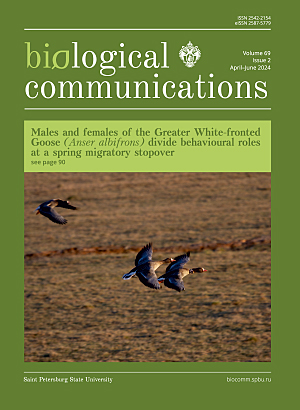Males and females of the Greater White-fronted Goose (Anser albifrons) divide behavioural roles at a spring migratory stopover
DOI:
https://doi.org/10.21638/spbu03.2024.204Abstract
Geese form long-term pair bonds due to the constant need for cooperation between partners. During spring migration, mates are assumed to divide roles: females feed more intensively than males to accumulate nutrient reserves for clutch formation and incubation, while males spend more time on alert to protect females. However, some behaviours require synchronisation to increase reproductive success. We studied whether there were behavioural differences between mates in Greater White-fronted geese (Anser albifrons) during feeding at a migratory stopover. According to our results, females spent more time feeding, and males were more alert while females were feeding. Walking intensity was significantly correlated between partners. Preference to follow the mate and the manifestation of visual lateralization did not differ between sexes. These findings illustrate the division of roles between partners and the synchronization of their movements. Such behaviour allows partners to stay close to each other and provide support to the mate.
Keywords:
migration, grazing, feeding, reproduction, visual lateralization, time budget, following, feeding intensity, monogamy
Downloads
References
Downloads
Additional Files
Published
How to Cite
License
Articles of Biological Communications are open access distributed under the terms of the License Agreement with Saint Petersburg State University, which permits to the authors unrestricted distribution and self-archiving free of charge.





